Japan is home to various festivals, each deeply intertwined with local traditions and culture. While festivals are primarily meant to offer gratitude to deities, those with unclear origins or striking visual impact are often referred to as "eccentric festivals." These unique events continue to be cherished and passed down among the local communities. In this article, we'll delve into the "Three Great Eccentric Festivals of Japan," perfect for those intrigued by Japan's deep cultural heritage. Read on to discover more!
※FUN! JAPAN may earn a commission when you purchase or book products featured in this article.
【Nagano】Onbashira Festival

Overview and History
The Onbashira Festival is a traditional event held in the Suwa region of Nagano Prefecture, taking place once every six years (once every seven years, according to the Japanese calendar). The festival centers around the ritual of erecting giant trees, known as Onbashira, at the four shrines of Suwa Taisha (Kamisha Honmiya, Kamisha Maemiya, Shimosha Harumiya, and Shimosha Akimiya).
With a history spanning over 1,200 years, the Onbashira Festival has been a crucial religious event since the early Heian period, though its origins may trace back even further into ancient times.
Event Details
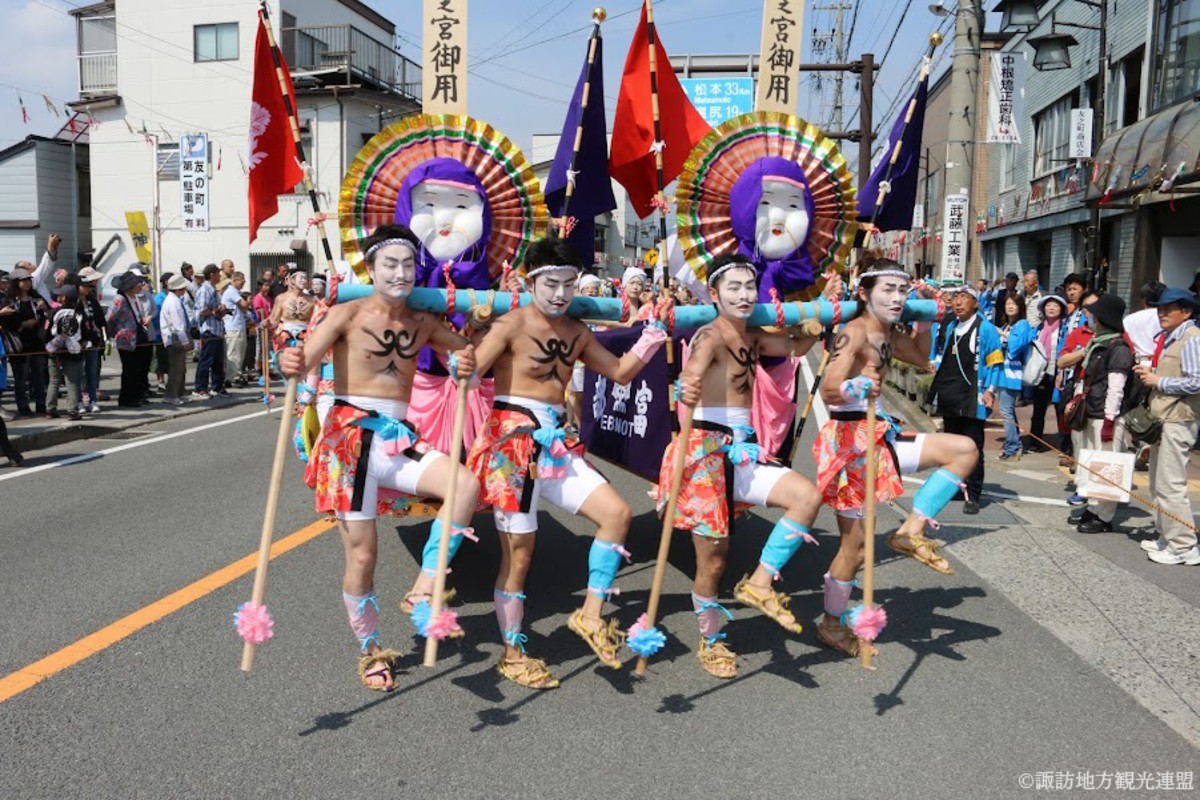
The series of events in the Onbashira Festival vary in timing and highlights between the upper shrines (Kamisha) and the lower shrines (Shimosha). The general sequence is as follows:
Provisional Selection (Kamisha: Two years prior, Shimosha: Three years prior)
Large trees from the Suwa Taisha's own forest or national forests are selected to be used as Onbashira.
Final Selection (Kamisha: One year prior, Shimosha: Two years prior)
Official designation of the trees to be used as Onbashira.
Felling (Kamisha: March of the year, Shimosha: One year prior)
Trees are felled using axes and saws while singing traditional songs, "Ki Yari Uta" (Tree Felling Song).
Kamisha Lottery Ceremony (February 15th of the year)
Lottery to decide the districts responsible for hauling the Onbashira for the upper shrines. *The districts for the lower shrines are predetermined, so no lottery is held.
Yamadashi (Early April of the year)
The trees are hauled from the mountains to the villages using only human power. The highlights include the steep descent called "Kiotoshi" and the river crossing known as "Kawakoshi."
Satobiki (Early May of the year)
Each of the four Onbashira is hauled to their respective shrines and erected at the four corners of the shrine buildings.
Hoden Senza Festival (Kamisha: June 15th, Shimosha: The night before Satobiki)
During Onbashira years, the sacred halls are alternately rebuilt, and the divine spirit is transferred to the newly constructed or renovated hall.
Injuries and Fatalities? Calls for Cancellation
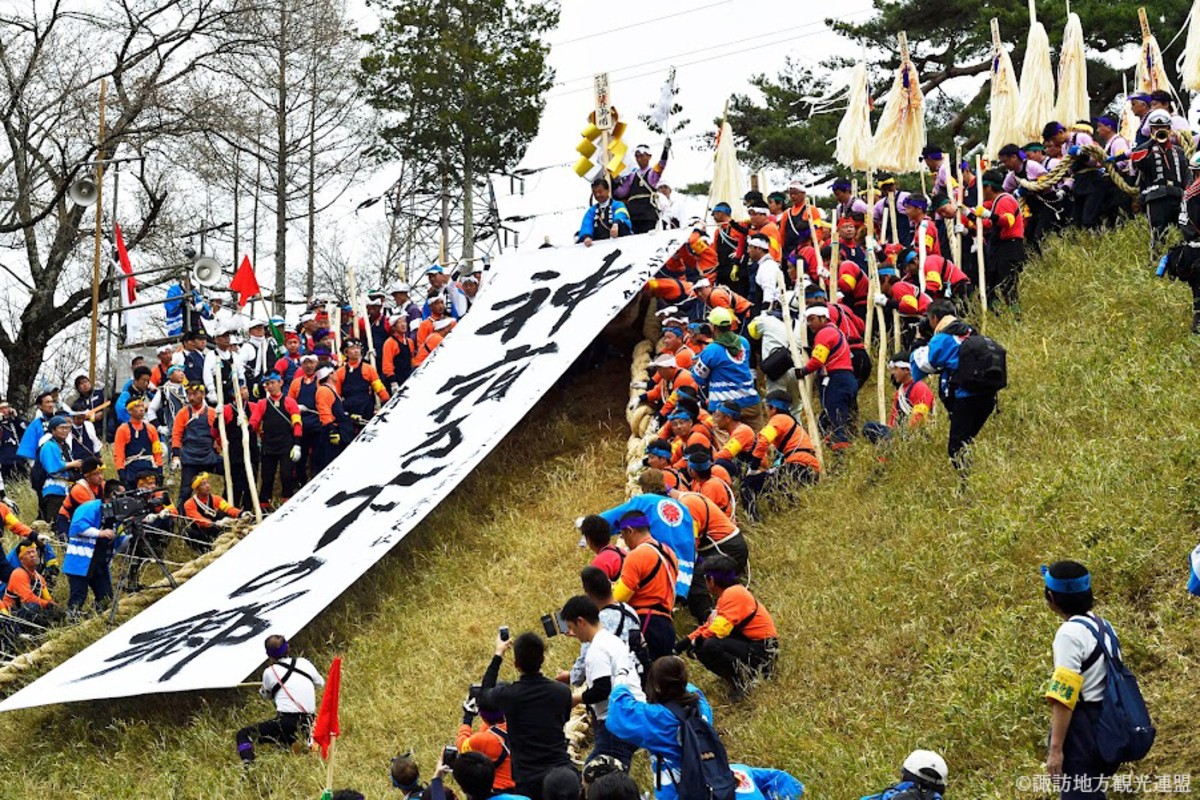
Transporting the massive trees for the Onbashira Festival is an enormous task that requires the collective effort of thousands of people. One of the most dangerous aspects of the festival is the "Kiotoshi," where people ride the top of the logs down steep slopes. This event has been so hazardous that it has resulted in fatalities, leading to recent calls for its cancellation and sparking debates about the festival's future.
While some argue that participants should accept personal responsibility, balancing the preservation of tradition with safety remains a critical challenge for the organizers.
Experience "Kiotoshi" at "Onbashira-kan Yoisa"
Located just a 3-minute walk from Shimosha Harumiya, "Onbashira-kan Yoisa" features exhibits of Onbashira route models, dioramas, and traditional festival attire. There's also a small attraction where you can simulate the "Kiotoshi" experience, making it a recommended stop after visiting the shrine.
- Address:
168-1 Shimosuwa-cho, Suwa-gun, Nagano Prefecture, 393-0092, Japan - Access:
Approximately a 20-minute walk from JR Shimosuwa Station on the Chuo Main Line - Hours:
9:00 - 17:00 ※Closing times may vary during the New Year's holiday and winter season - Closed:
Open year-round (occasional temporary closures) - Admission fee:
【General】Adults 300 yen, Children (elementary and junior high school students) 200 yen,
【Groups (20+)】 Adults 250 yen, Children (elementary and junior high school students) 150 yen,
【People with Disabilities (including caregivers)】 Adults 150 yen, Children (elementary and junior high school students) 100 yen
Event Overview
- Event period:
Next event will be in 2028 - Access:
①Kamisha Honmiya: Approximately a 45-minute walk from JR Chino Station
②Kamisha Maemiya: Approximately a 40-minute walk from JR Chino Station
③Shimosha Harumiya: Approximately a 20-minute walk from JR Shimosuwa Station
④Shimosha Akimiya: Approximately a 15-minute walk from JR Shimosuwa Station - Viewing seat tickets:
Paid viewing seat tickets for "Kiotoshi" can be purchased by lottery from the Onbashira Festival website - Official website:
https://onbashira.jp/
【Akita】Namahage Sedo Festival
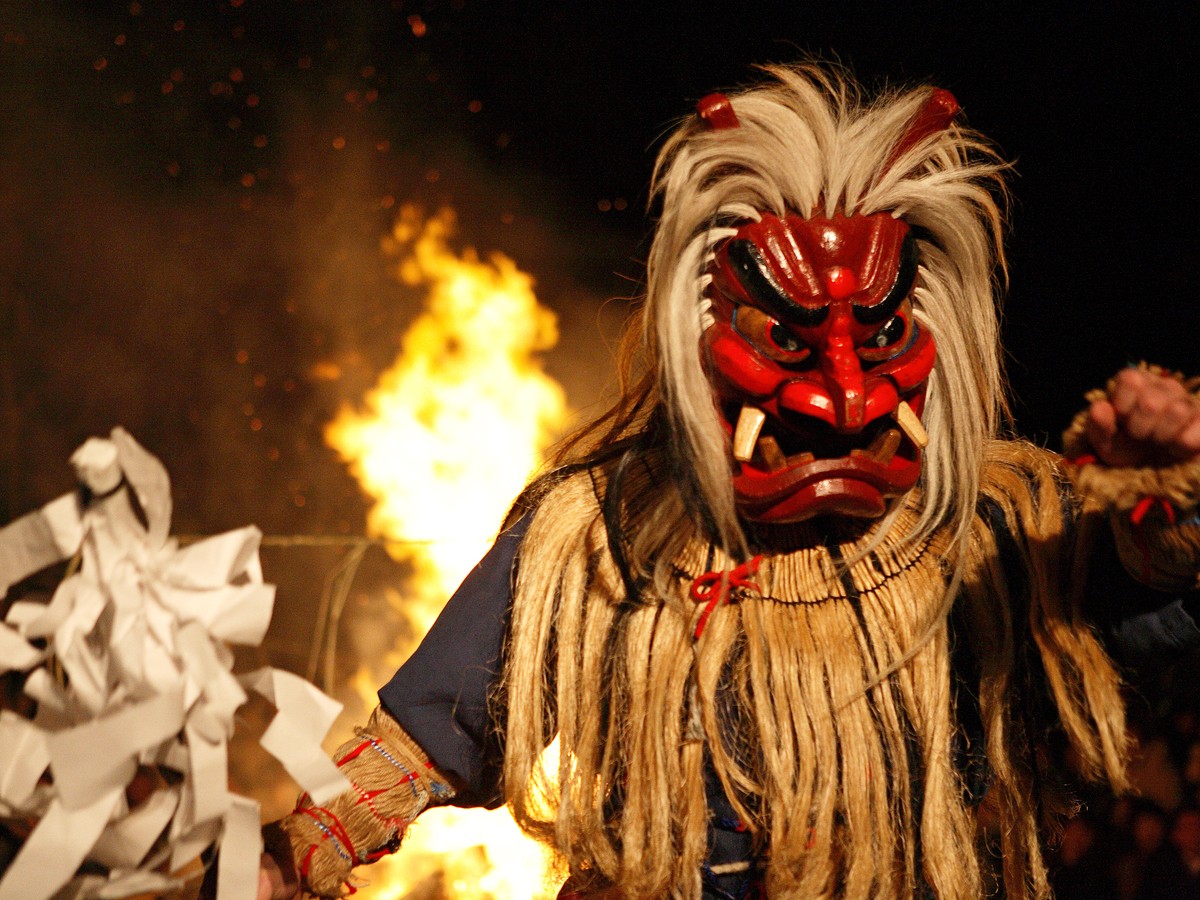
Overview and History
The Namahage Sedo Festival is held every February in Oga City, Akita Prefecture. This festival combines the traditional folk event "Namahage" with the 900-year-old religious ceremony "Saitousai," creating a unique tourism event.
Since its inception in 1964, aimed at promoting winter tourism in the Oga Hot Spring Village, the festival has never been canceled, despite challenges such as depopulation, aging society, and the COVID-19 pandemic. It has always been supported by the local community.
Event Details
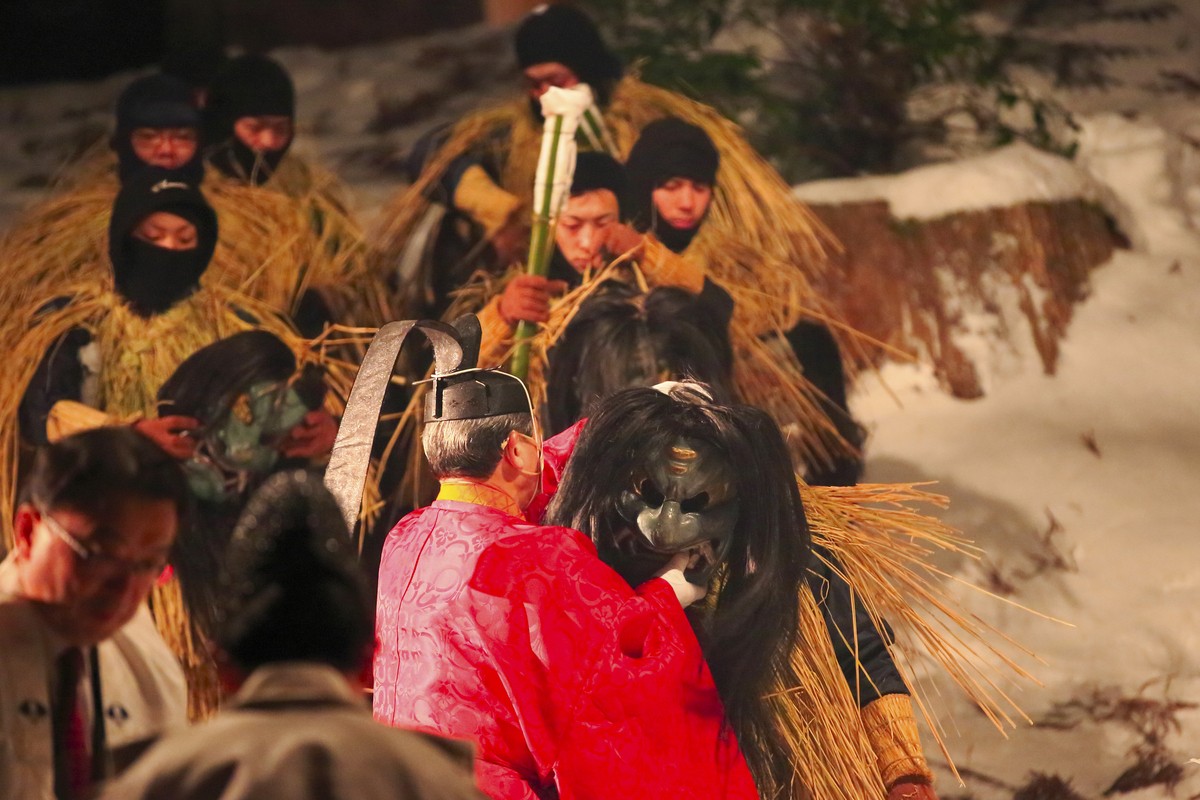
Chinkama Festival & Yunomai
The chinkama Festival is a traditional boiling water ceremony in which a priest chants incantations while stirring boiling water in a large cauldron with a straw broom. This is followed by the "Yunomai," a purification dance unique to the Oga region.
Namahage Invocation
Young men dressed as Namahage receive masks imbued with the spirit of the gods from the priest and then return to the mountains.
Namahage Ritual Reenactment
The traditional Namahage ritual, performed on New Year's Eve, is reenacted at the Kagura Hall of Shinzan Shrine. The scene where Namahage, as messengers of the gods, visit households to admonish the lazy and children is a must-see.
Namahage Dance
Created by a contemporary dancer and composer from Akita, this dance became a staple at banquets in Oga Hot Spring Village during the 1970s.
Namahage Taiko
A unique local performance combining Namahage and Japanese drums is showcased.
Namahage Descent & Offering of Rice Cakes
Fifteen Namahage holding torches descend from the snowy mountains to the festival grounds. They receive sacred rice cakes (Gomamochi) imbued with divine power from the priest and then return to the gods.
Invasion of the Village Namahage
Namahage from various districts in the city join the festival. The handmade masks, each unique to their district, are a highlight.
Distribution of Gomamochi
Gomamochi is said to bring health, protection from misfortune, and good luck. At the end of the festival, Namahage distribute the rice cakes, which they cut up, to the audience.
Experience Namahage Customs at 'Namahage Museum', 'Oga Shinzan Folklore Museum'
These facilities introduce the local history and culture with a focus on the Namahage tradition. Namahage-kan displays Namahage masks and costumes actually used in various parts of Oga City and screens a documentary film on a large screen.
The adjacent Oga Shinzan Folklore Museum, utilizing a typical Magariya (L-shaped) farmhouse of the Oga region, offers daily educational courses where visitors can experience Namahage customs firsthand.
- Address:
Mizukuisawa, Kitaurashinzan, Oga City, Akita Prefecture, 010-0685, Japan - Access:
About 20 minutes by taxi or Namahage Shuttle from JR Oga Station
40 minutes by car from Showa Oga Hanto I.C - Hours:
【Namahage Museum】8:30~17:00
【Oga Shinzan Folklore Museum】
April to November: Open daily
9:00, 9:30, 10:00, 10:30, 11:00, 11:30, 13:30, 14:00, 14:30, 15:00, 15:30, 16:00, 16:30
December to March (daily)
9:30, 10:30, 11:30, 13:30, 14:30, 15:30
*In addition to the above, courses are also held at 10:00, 11:00, 14:00, and 15:00 on December 31
*In addition to the above, courses are also held at 9:00, 10:00, 11:00, 14:00, and 15:00 on January 1 and 2 - Closed:
Open all year round - Admission fee:
【Namahage Museum】660 yen (330 yen for elementary, junior high and high school students)
For groups of 15 or more 590 yen (260 yen for elementary, junior high and high school students)
【Common to Namahage Museum and Oga Shinzan Folklore Museum】1100 yen (660 yen for elementary, junior high and high school students)
For groups of 15 or more 1000 yen (530 yen for elementary, junior high and high school students)
For groups of 30 or more 900 yen (450 yen for elementary, junior high and high school students)
Event Overview
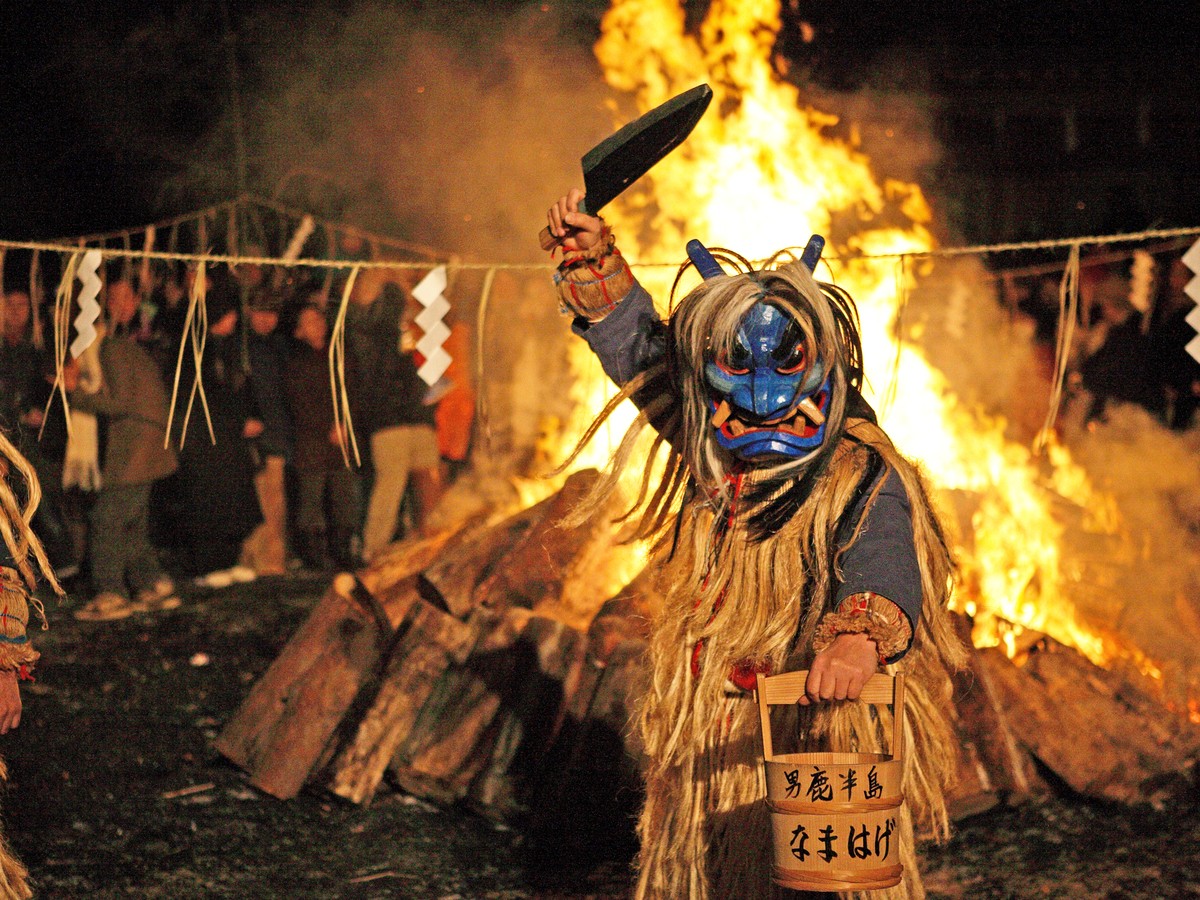
- Event period:
The second Friday, Saturday, and Sunday of February every year. - Access:
Approximately 25 minutes by Namahage Shuttle from JR Oga Station.
※On the day of the event, there are temporary paid buses available between JR Oga Station, Oga Hot Spring Village, and the venue. - Viewing seat ticket:
None
※Admission is by prior application only, with an admission support fee of 1,000 yen per person (free for junior high school students and younger, cash only). - Official website:
https://oganavi.com/sedo/
【Yamanashi】Yoshida Fire Festival
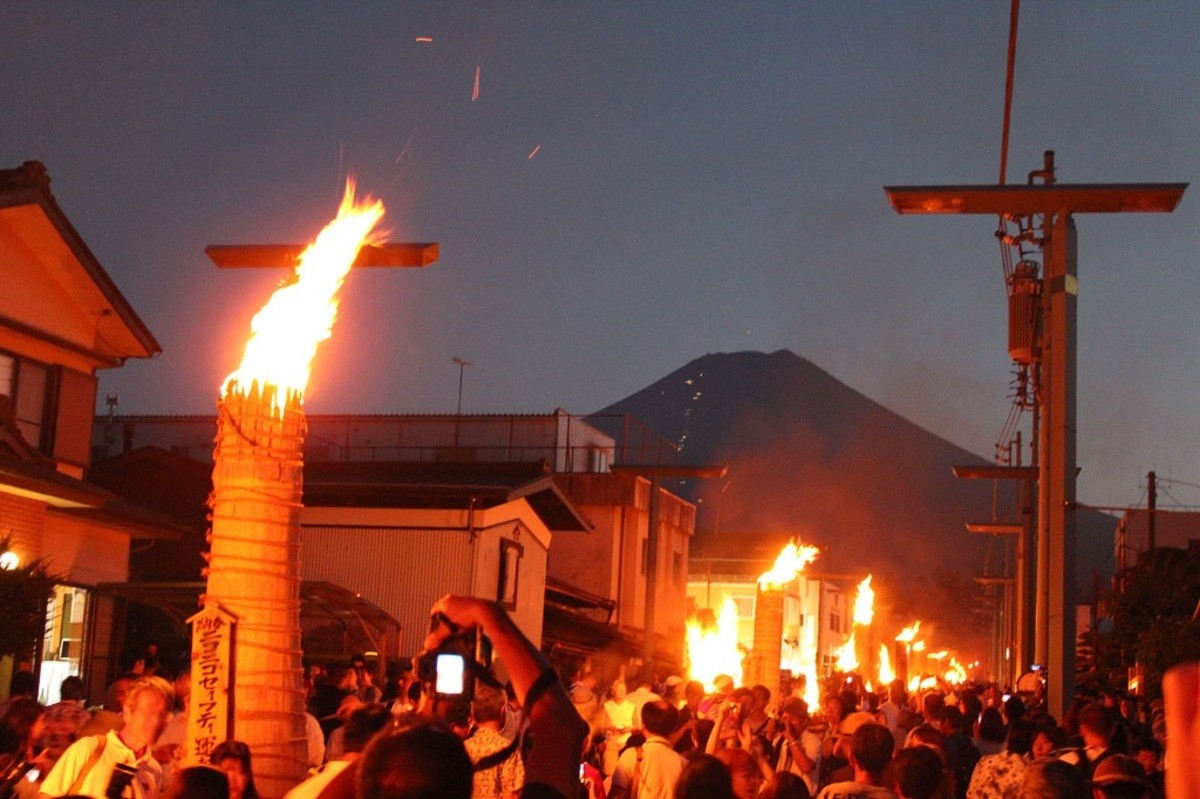
Overview and History
The Yoshida Fire Festival is a fire prevention festival held annually on August 26th and 27th in Fujiyoshida City, Yamanashi Prefecture. It is also an autumn festival jointly organized by the Kitaguchi Hongu Fuji Sengen Shrine and Suwa Shrine.
The history of the Yoshida Fire Festival dates back approximately 400 years. Today, it not only serves to pacify Mount Fuji's volcanic eruptions but also marks the end of the summer climbing season of Mount Fuji.
Event Details
First Day (August 26th): In the afternoon, ceremonies are held at the Kitaguchi Hongu Fuji Sengen Shrine and Suwa Shrine. Afterward, two portable shrines (mikoshi) are paraded through the Kamiyoshida district. In the evening, once the mikoshi arrive at the “Otabisho,” over 100 large torches along the road from the Golden Torii to the Sengen Shrine are simultaneously lit, illuminating the night.
Second Day (August 27th): In the afternoon, the two mikoshi are carried again, and after a ceremony at the Golden Torii, they are returned to the shrines. Worshippers carrying bundles of susuki grass (sacred offering grass) purified with white paper bands follow the mikoshi and circle an area called “Takamagahara” within the shrine grounds seven times.
Finally, a return festival is held at the main shrine, concluding the two-day fire prevention festival.
'Fujisan Museum': View the Mikoshi and Large Torches
The Fujisan Museum, operated by Fujiyoshida City, is a history and folklore museum that introduces the charm of Mount Fuji, focusing on materials related to the worship of Mount Fuji. The museum’s permanent exhibit includes actual mikoshi and large torches used in the fire festival, allowing visitors to explore the festival’s history.
Elementary, junior high, and high school students: 200 yen
- Address:
7-27-1 Higashi, Kamiyoshida, Fujiyoshida City, Yamanashi Prefecture 403-0013, Japan - Access:
About a 1-minute walk from Sun Park Fuji bus stop, accessible by bus from Fuji-Q Highland Station.
Approximately 10 minutes from Kawaguchiko I.C. on the Chuo Expressway.
Approximately 15 minutes from Fujiyoshida Nishikatsura Smart I.C. - Hours:
9:30-17:00
※Last admission at 16:30 - Closed:
Tuesdays (except holidays), New Year's holidays (December 28 - January 3)
※Open daily in July and August - Admission fee:
Adults: 400 yen
Elementary, junior high, and high school students: 200 yen
※Group discount available (20+: adults 320 yen, students 160 yen)
Event Overview
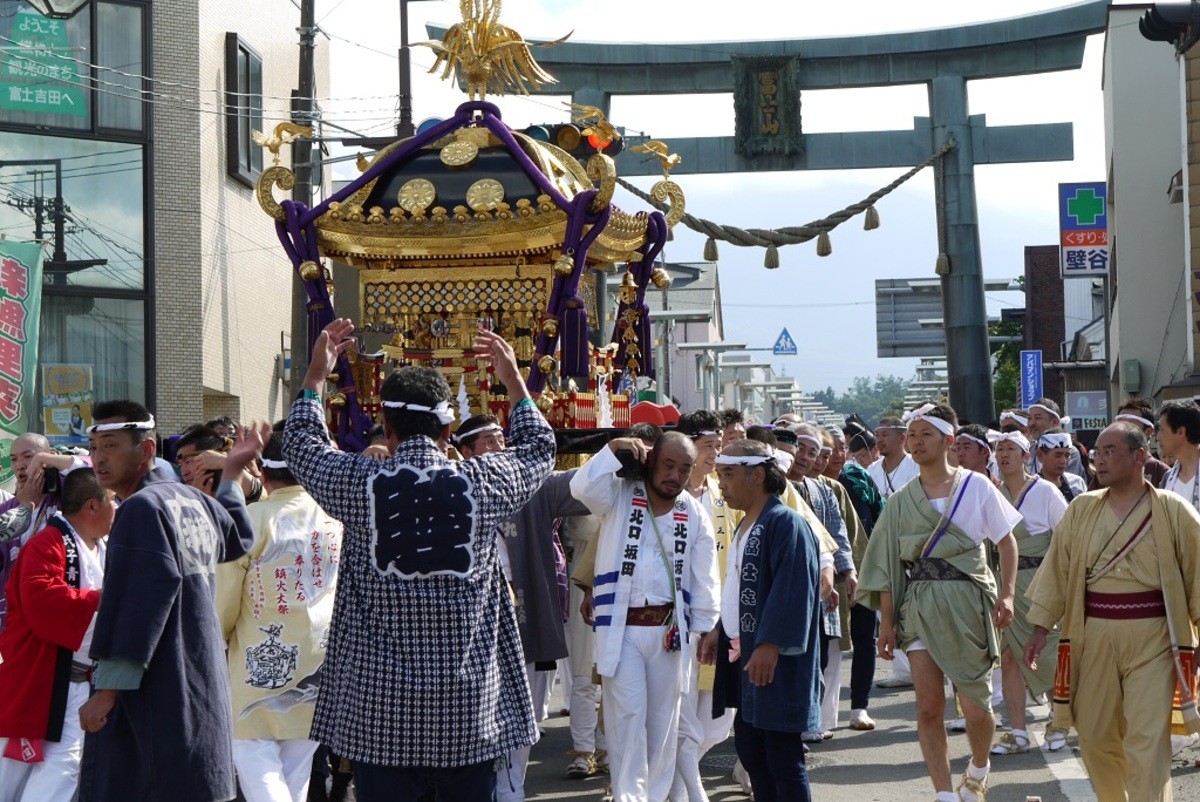
- Event period:
Every year on August 26th and 27th - Access:
Public transportation: 5 minutes walk from Fujikyu Fujisan Station
Car: 2km 10 minutes from Kawaguchiko IC on the Chuo Expressway via Route 139 - Official website:
https://fujiyoshida.net/feature/himatsuri/index
Join a Day Trip Tour to Experience the Yoshida Fire Festival
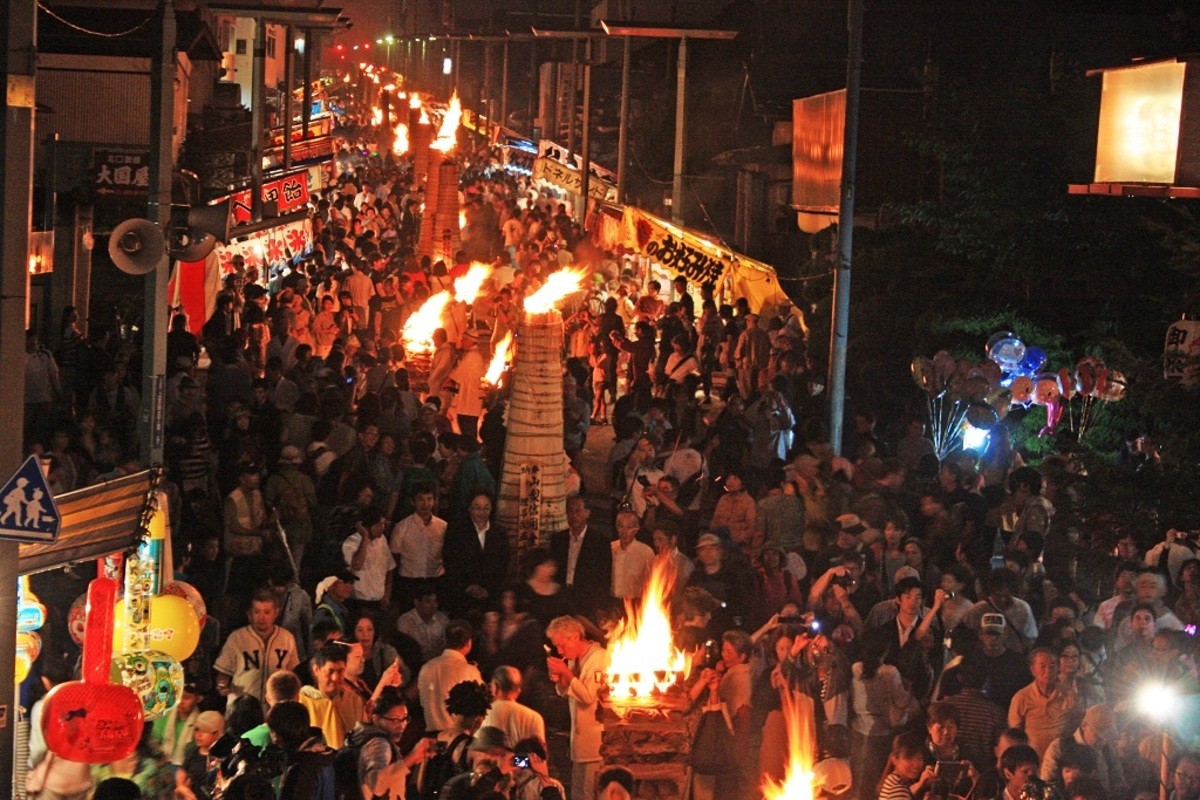
If you want to see the Yoshida Fire Festival but are worried about navigating and arranging transportation, joining a tour is recommended. You can also visit tourist spots around Mount Fuji, ensuring a fulfilling day exploring the local attractions!
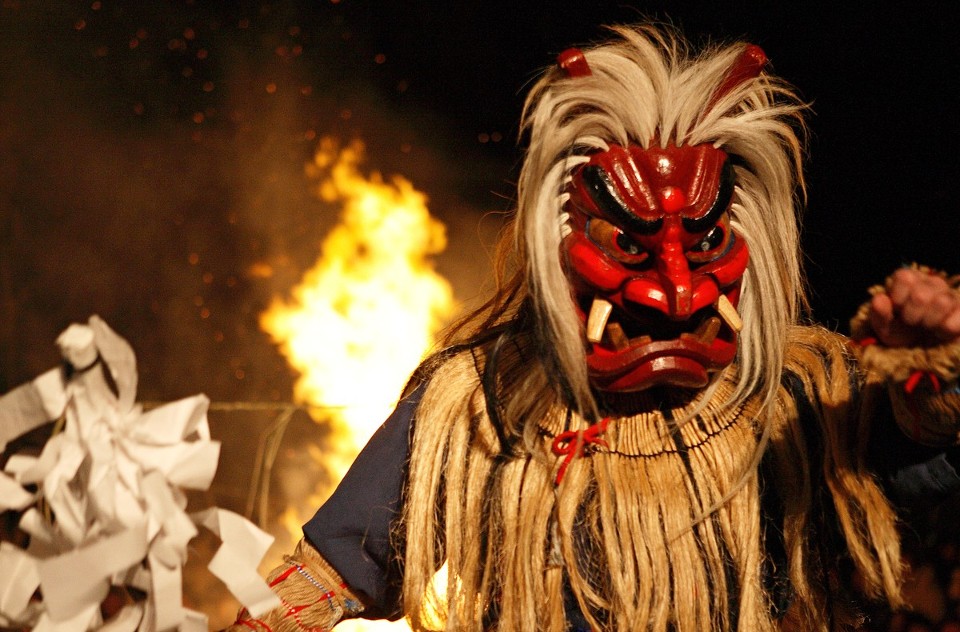
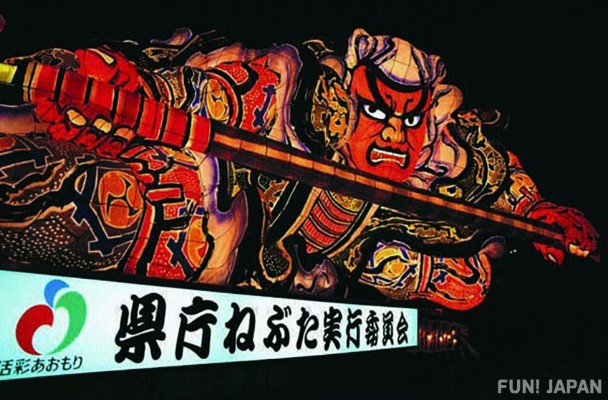
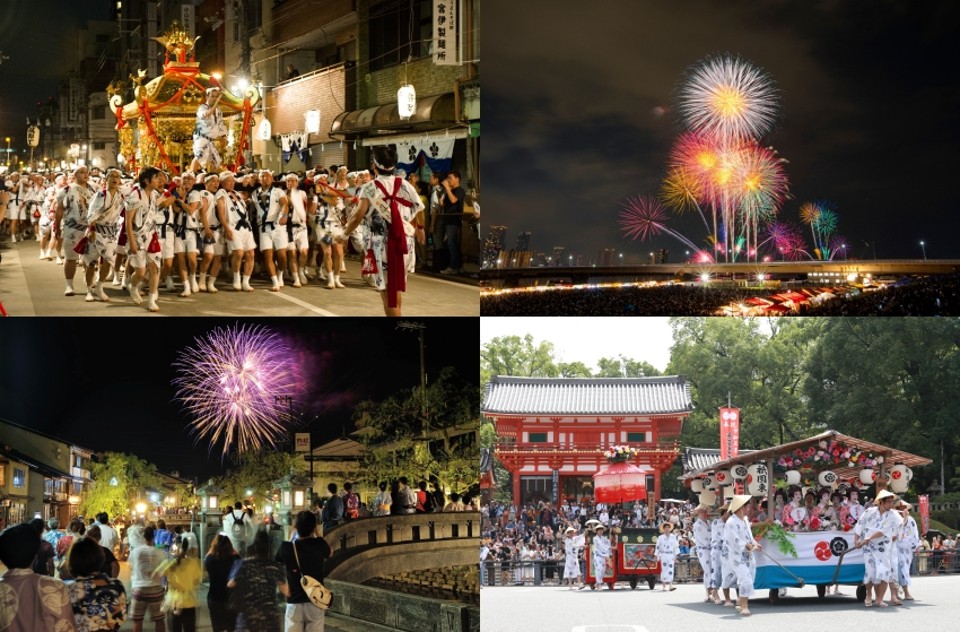
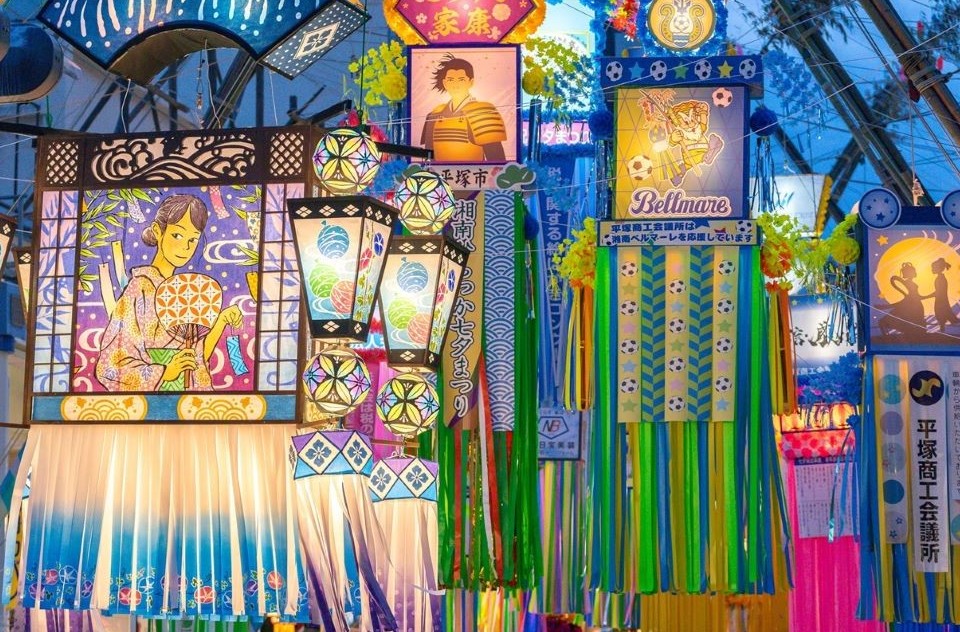
Comments